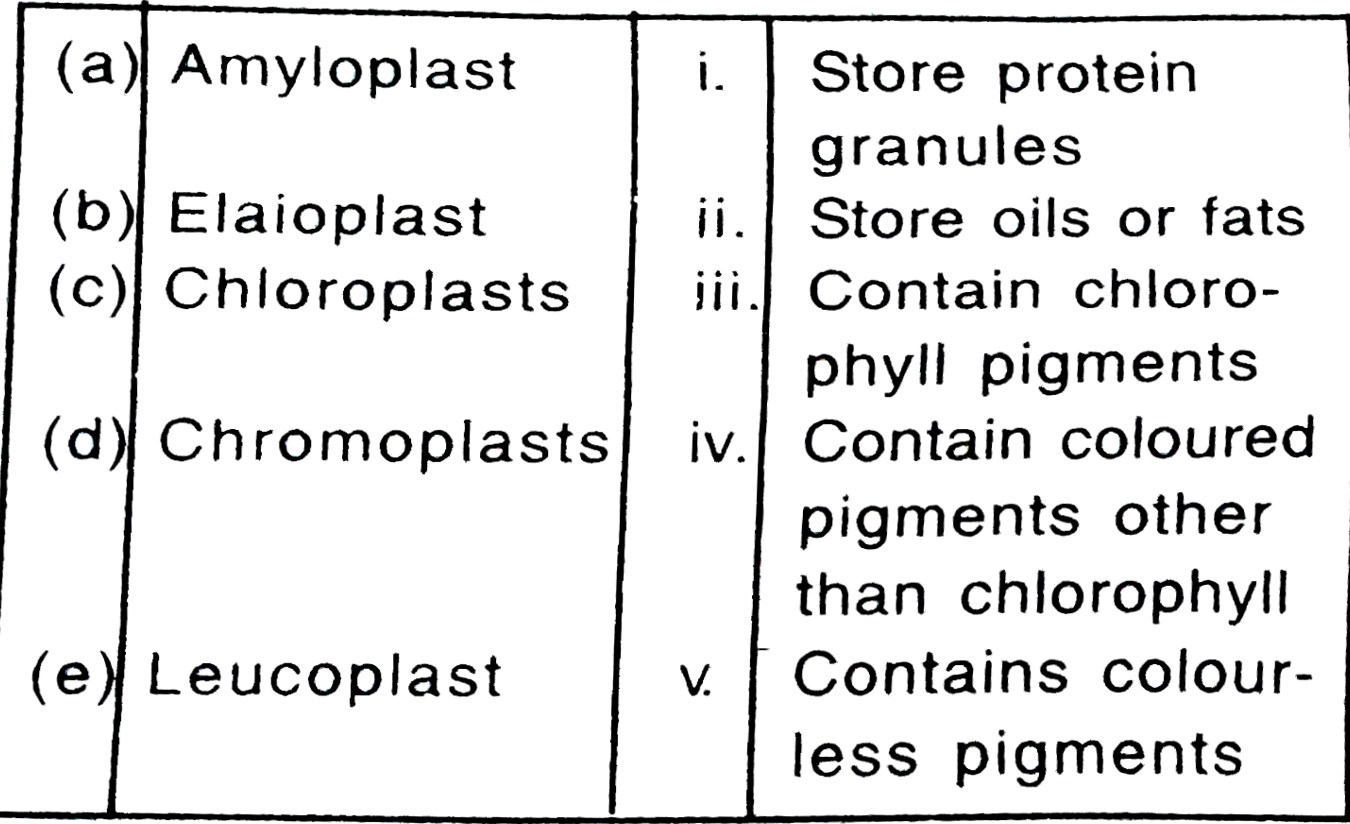Select the mismatched pair.
Symbiotic bacteria-Rhizobium, Frankia
Symbiotic cyanobacteria-Frankia, Aulosira
Free-living bacteria-Beijerinckia, Azotobacter
none of these
The correct Answer is:B
To solve the question of selecting the mismatched pair from the given options, let's analyze each option step by step:
Step 1: Understand the Terms
- Symbiotic Bacteria: These are bacteria that form a mutualistic relationship with a host (plant, animal, or fungus), where both parties benefit.
- Cyanobacteria: These are photosynthetic bacteria that can fix nitrogen and can also form symbiotic relationships with various eukaryotes.
Step 2: Analyze Each Option
1. Symbiotic Bacteria Rhizobium, Francia
- Rhizobium: This bacterium forms a symbiotic relationship with leguminous plants, aiding in nitrogen fixation.
- Francia: This is another genus of bacteria that forms symbiotic relationships, particularly with actinorhizal plants.
- Conclusion: This pair is matched correctly.
2. Symbiotic Cyanobacteria, Francia, Allocera
- Francia: As mentioned, it is a symbiotic bacterium.
- Allocera: This is not a recognized symbiotic cyanobacterium. This seems to be the mismatched part.
- Conclusion: This pair is mismatched.
3. Free-living Bacteria, Bacterinica, and Azotobacter
- Bacterinica: This term is not commonly recognized in the context of free-living bacteria.
- Azotobacter: This is a well-known free-living nitrogen-fixing bacterium.
- Conclusion: This pair is potentially mismatched due to "Bacterinica."
4. None of these
- This option suggests that all previous pairs are correctly matched, which is not the case.
Step 3: Identify the Mismatched Pair
Based on the analysis, the mismatched pair is:
- Symbiotic Cyanobacteria, Francia, Allocera (because Allocera does not fit as a recognized symbiotic cyanobacterium).
Final Answer
The mismatched pair is Symbiotic Cyanobacteria, Francia, Allocera.
---
- Symbiotic Bacteria: These are bacteria that form a mutualistic relationship with a host (plant, animal, or fungus), where both parties benefit.
- Cyanobacteria: These are photosynthetic bacteria that can fix nitrogen and can also form symbiotic relationships with various eukaryotes.
1. Symbiotic Bacteria Rhizobium, Francia
- Rhizobium: This bacterium forms a symbiotic relationship with leguminous plants, aiding in nitrogen fixation.
- Francia: This is another genus of bacteria that forms symbiotic relationships, particularly with actinorhizal plants.
- Conclusion: This pair is matched correctly.
- Francia: As mentioned, it is a symbiotic bacterium.
- Allocera: This is not a recognized symbiotic cyanobacterium. This seems to be the mismatched part.
- Conclusion: This pair is mismatched.
- Bacterinica: This term is not commonly recognized in the context of free-living bacteria.
- Azotobacter: This is a well-known free-living nitrogen-fixing bacterium.
- Conclusion: This pair is potentially mismatched due to "Bacterinica."
- This option suggests that all previous pairs are correctly matched, which is not the case.
Based on the analysis, the mismatched pair is:
- Symbiotic Cyanobacteria, Francia, Allocera (because Allocera does not fit as a recognized symbiotic cyanobacterium).
The mismatched pair is Symbiotic Cyanobacteria, Francia, Allocera.
Topper's Solved these Questions
- MINERAL NUTRITIONBook:NCERT FINGERTPS ENGLISHChapter:MINERAL NUTRITIONExercise:Assertion & Reason
Explore 15 Videos
- MINERAL NUTRITIONBook:NCERT FINGERTPS ENGLISHChapter:MINERAL NUTRITIONExercise:Mineral Nutrition
Explore 130 Videos
- LOCOMOTION AND MOVEMENTBook:NCERT FINGERTPS ENGLISHChapter:LOCOMOTION AND MOVEMENTExercise:Locomotion And Movement
Explore 139 Videos
- MORPHOLOGY OF FLOWERING PLANTSBook:NCERT FINGERTPS ENGLISHChapter:MORPHOLOGY OF FLOWERING PLANTSExercise:Morphology Of Flowering Plants
Explore 135 Videos
Similar Questions
Knowledge Check
Mark the mismatched pair.
AAmyloplast - Store protein granuleBElaioplast - Store oils or fatsCChlorplasts - Contain chlorophyll pigmentsDChromoplasts - Contain coloured pigments other than chlorophyllChoose the mismatched pair.
ACannabis-AnemophilyBZostera - HydrophilyCSalvia-EntomophilyDAdansonia-Ornithophily



